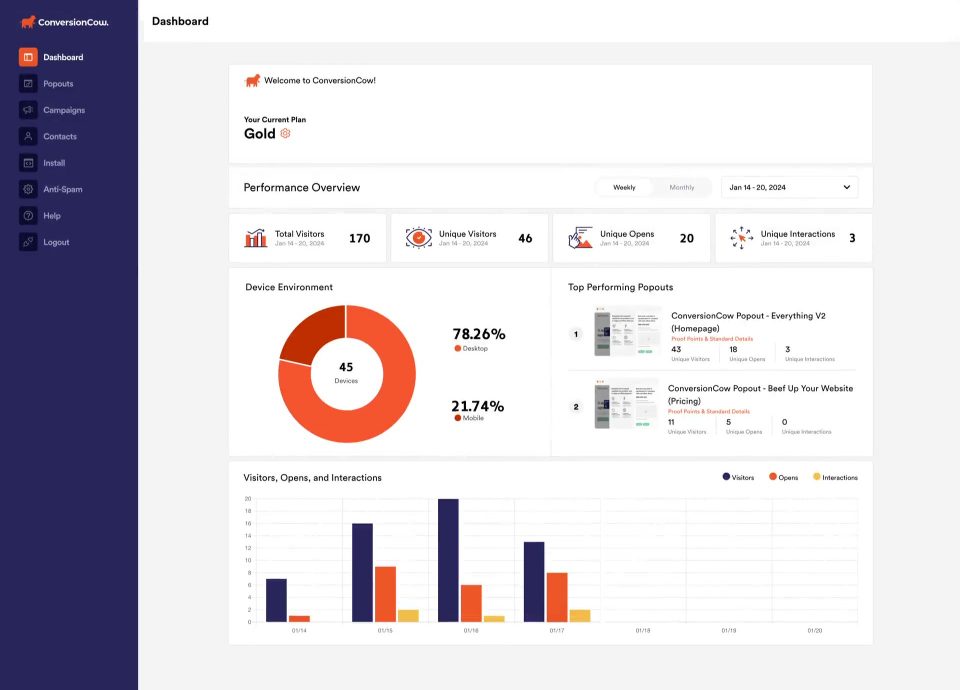
It is no surprise that mobile marketing has become increasingly crucial for achieving sustainable success online.
According to a recent report, 86% of the overall global population owns a smartphone, and this number is expected to grow in the coming years. If you want to stay ahead of your competitors, establishing a solid mobile marketing strategy can help you build strong customer relationships.
Let’s take a look at the 6 ways you can maximise online channels and connect with your target audience.
Personalise Mobile Engagement
Always remember that mobile personalisation is a powerful tool for boosting engagement and revenue. But this is only possible if you are doing it right.
The best way you can do this is by creating customised customer experiences. This means that creating similar messages, or content for each customer segment, is not enough. You have to adjust them based on your buyer persona and align them to their needs, pain points, and preferences.
To effectively personalise, start by segmenting your customer base using data like purchase history, browsing habits, or location. Tools like CRM systems can help automate this process and ensure messages are accurately tailored to each group.
Following these practices will help enrich your mobile marketing efforts and promote a cohesive customer experience. This, in turn, increases your chances of capturing higher engagement and customer retention rates.
Utilise Mobile-Friendly Content
One of the many things that businesses overlook is optimising their website content for mobile viewing. With the growing number of mobile users, you have to make sure that your website assets fit every screen size to promote a positive viewing experience.
If your website takes too long to load or is not easy to navigate, this may potentially turn a valuable customer. In worst-case scenarios, they may even move along to a competitor of your business.
Optimising for mobile can be done by ensuring fast load times, compressing images, simplifying navigation, and using responsive design frameworks like Bootstrap. You can use Google’s Mobile-Friendly Test tool to easily identify any issues specific to your mobile site without any additional cost.
You should also make it easy for your customers to complete actions without switching devices. For example, adding mobile payment options and order tracking features can improve customer perception and experience.
Implement Geolocation Targeting
Geolocation targeting is important for all types of businesses, especially those focusing on local markets. It allows you to connect not just on location but also on customer behavior, interest, and demographics. This also enables you to create more effective, personalised, and well-performing audience-specific content for mobile marketing.
In return, it can maximise your online reach, drive more effective promotions, increase relevance, and boost conversion rates. Here’s how to setup geolocation targeting:
Step 1: Choose a platform that supports geolocation targeting.
Step 2: Define your target audience by specifying geographic regions.
Step 3: Create or upload your content tailored for each location.
Step 4: Set up geolocation rules to determine how content is displayed based on users’ locations.
Step 5: Test your setup to ensure content is accurately targeted and displayed.
However, it’s important to consider user privacy laws like GDPR or CCPA, which require user consent for collecting location data. Make sure your geolocation efforts are compliant by including clear opt-in options and explaining how the data will be used.
Integrate Social Media Marketing
Social media and mobile phones often, if not always, go hand-in-hand. In fact, a report from Backlinko says that over 99% of social media users access the platform through their mobile phones. This means that by leveraging social media, you can reach billions of people and potentially connect with new customers.
So if you are focusing on mobile marketing, you may also want to focus on your social media marketing strategy to boost its effectiveness. This will also help you reach active social media users which can increase the brand awareness for your brand.
Build Your Local Listing Profiles
When we say local listing, we are not only referring to Google My Business. There are also other platforms that you should use to reach more customers. Listed below are other local listing profiles to sign up for:
- Yelp
- Bing Places for Business
- Yahoo Local
- Apple Maps
- TripAdvisor
- Yellow Pages
- Angie’s List
- Foursquare
- MapQuest
- Better Business Bureau (BBB)
- Citysearch
- Superpages
Local listings serve as directories of various businesses in specific areas. You can also look for niche-specific listings to feature your business. Building various local listing profiles will increase your online visibility and searchable through mobile phones.
It’s important to maintain your listings by keeping your business information up-to-date and consistent across all platforms. Failure to do so can negatively impact your local search rankings in the long run.
Use ConversionCow
ConversionCow is an innovative platform designed to enhance your website’s performance, making it a powerful tool for mobile marketing and customer management. With this website plugin solution, you can optimise your website for mobile users and guarantee a positive experience from the moment they land on your site.
One standout feature of ConversionCow is its ability to deliver custom messages at optimal times directly to users. The platform also offers pop-up and landing page tools that are optimised for all devices to ensure your content is displayed perfectly across all devices.
Here are its other features:
- Integration with data analytics tools
- Real-time user engagement tracking
- Easy setup and no coding required
- Success and insight tracking
- A/B testing
Conclusion
Optimising your website for mobile is a great start, but it’s only part of the equation. To truly connect with your mobile audience, you need a well-rounded mobile marketing strategy that goes beyond a responsive site.
By implementing the techniques discussed, you can create a robust mobile marketing campaign that attracts and retains users. These strategies will help you reach the right audience, deliver relevant content, and drive better results for your business.
Related Articles
See All
Marketing
Tracking Your Conversions With ConversionCow

Marketing
Top Video Marketing Tools for 2024 – Exploring Alternatives to YouTube & TikTok for Enhanced Marketing Strategies

Marketing
2024 Current Trends & Future Outlook On Facebook, Instagram & TikTok

Marketing